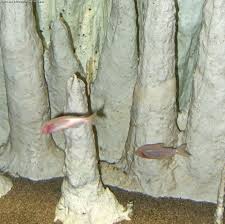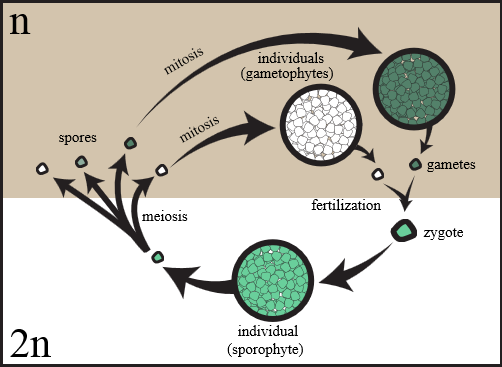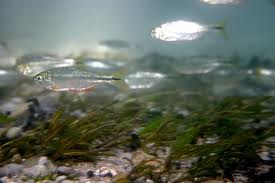Can you feel the love tonight? If yes, you must be in the middle of a Blind Cave Fish courting!
Among the many amazing features of the
Astyanax sp., the elaborate courtship leading up to
reproduction is one that not only relies on the environment for
success, but also on the talents of the fish themselves. In this
species of
dioecious fish, both
male and female are both active participants in the courtship
process. Because the Blind Cave Fish are blind, both the male and
female fish will make very exaggerated movements of their mouths and
gills. This movement helps them to locate a partner in complete
darkness based on the differentiation of the current and turbulence
of the water. After locating a partner, the male and female will
swim side by side until they decide to mate. The female will expel
her eggs to the bottom substrate where they will adhere to a porous
rock substance. The male will then go down and release milt in order
to fertilize the expelled eggs (Fishbase.org/reproduction). For an
up close view of what this courtship looks like, check out this
video on youtube! Having a mating ritual
is not specific to this organism, but rather most organisms posses a
specific style for attracting a mate. Different to the Blind Cave
Fish, the Moreton Bay Bug relies on the males in order for
reproduction to begin. Check out their specific courtship
HERE.

The Astyanax jordani are considered "non-guarders" which
means that they do not protect their eggs and young once spawing has
been completed. Along with that, these fish are also considered open
substrate spawners, which means that in the
benthic zone they reside
in, they will expell eggs that adhere and stick to substrate or eggs
that have long-strings to attach to the surface of the substrate.
This activity of the egg is also key for their "brood hiding"
characteristic. The expelling of eggs will not generally be out in
the open where predators reside, but rather into areas that have
crevices and pores into which the eggs can stay hidden to prevent
predation (Fishbase.org/reproduction). Many other species of fish
are known to be "non-guarders", however, tend to lay their eggs in
places with little predation. The Clupea pallasii, which
reside in the Pacific, will migrate inshore to an area that is high
in nutrients but low in predation which will increase the likelihood
of survival for their brood. Check out the Pacific herring
HERE.
After this spawing show and finale, the eggs
will follow the general life cycle that is written below....
General Blind Cave Fish Life Cycle*:
Egg Stage- most eggs will not survive to maturity even under the best conditions. There are many threats that can cause the eggs not to survive, such as: other predatory species, water temperatur, oxygen levels, disease, and composition of sedimentation.
Larval Stage- larval fish will live off of a yold sac that is attached to their bodies. When this nutrient source is completely absorbed into the larval fish, the newly young fish is called a "fry". An interesting thing to note about larval fish in this species is that they are not blind like their parents. Larval fish will originally develop eyes early on but after some time the “eye-like” substance will start to degenerate, leaving what might be confused as a scarred looking eye patch (Denverzoo.org).
Fry Stage- this stage indicates that the fish will start eating on its own. These fry will undergo a lot of developmental changes as they mature which occurs over the first year of living. Some larval fish that survive to become fry will be born with eyesight. When this occurs, the eyes will later be clouded over and eventually shrink because eyesight in the caves is not necessary for survival and so lack of use causes lack of formation. Generally, Astyanax will not be born with fully functional eyes, but instead partial blindness or full blindness (Denverzoo.org)
Juvenile Stage- this stage falls within "fry" and "adulthood". During this stage many fish will die due to predation and other environmental fluctuations. There is a greater likelyhood of survival if fish are able to survive through this stage.
Adult Stage- fish are finally considered adults when they are able to take part in reproduction. After reaching this age and maturity, fish will be able to go through spawning stages which occur in various times throughout the year. This genus of fish is known to live between 5 and ten years at adult maturity (Pittsburghzoo.org)
Spawning Stage- this is a time when female fish will release their eggs into the water column while males will fertilize the eggs by releasing their milt. This process is know specifically as external fertilization. Many of the eggs will not survive because they do not get fertilized and even those that do undergo fertilization are not guaranteed to live to maturity.
*Information listed in general life cycle: (Teaching Great Lakes Science 2014)
 Let's
not forget that the Astyanax jordani
also follow what is known as the gametic life cycle. This life cycle
is followed by animals, us included, and is outlined in the picture
below! As a multicelluar diploid (2N) (adult fish), special cells
undergo meiosis to produce haploid (1N) gametes. Gametes from two
different species will come together and fuse in order to produce a
diploid (2N) zygote. Through many rounds of mitosis, this
unicellular zygote will eventually form a multicellular diploid
organism, which is the beginning of the continuous and beautiful
cycle of life! Just like many other organisms, this fish is not
specific to this cycle. However, the specific stages of the cycle
have evolved in other species based on natural selection and other
factors. For example, the Salmo salar, otherwise known as
"The Leaper", follows this gametic cycle but instead of having just
a juvenile and adult stage, they go from being parr to smolt and
finally ending with adulthood. Check out their reproductive cycle
and other interesting facts about this fish
HERE.
Let's
not forget that the Astyanax jordani
also follow what is known as the gametic life cycle. This life cycle
is followed by animals, us included, and is outlined in the picture
below! As a multicelluar diploid (2N) (adult fish), special cells
undergo meiosis to produce haploid (1N) gametes. Gametes from two
different species will come together and fuse in order to produce a
diploid (2N) zygote. Through many rounds of mitosis, this
unicellular zygote will eventually form a multicellular diploid
organism, which is the beginning of the continuous and beautiful
cycle of life! Just like many other organisms, this fish is not
specific to this cycle. However, the specific stages of the cycle
have evolved in other species based on natural selection and other
factors. For example, the Salmo salar, otherwise known as
"The Leaper", follows this gametic cycle but instead of having just
a juvenile and adult stage, they go from being parr to smolt and
finally ending with adulthood. Check out their reproductive cycle
and other interesting facts about this fish
HERE.
Go back home!
Let's move on to interactions with the environment
HERE!
Want to see other organisms created by UWL students:
Check out
MultipleOrganisms.net!
